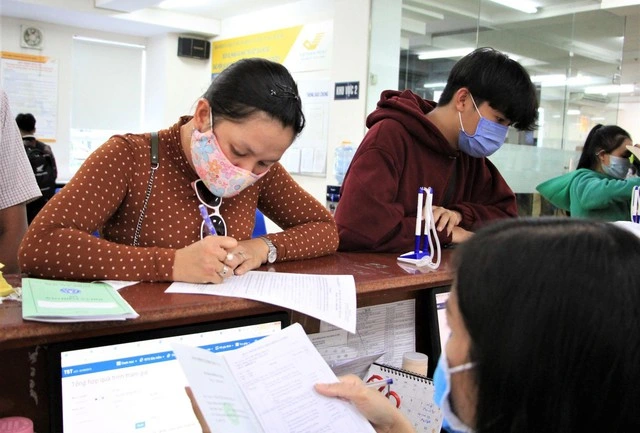In the draft revised Law on Social Insurance, in addition to the plan for employees to withdraw social insurance at one time as currently regulated, the Ministry of Labor, Invalids and Social Affairs proposed an additional plan to resolve a maximum of no more than 50% of the social insurance payment period if employees withdraw at one time.
The Ministry of Labor, Invalids and Social Affairs is seeking opinions from ministries and branches on the draft revised Social Insurance Law, which includes new points related to the one-time social insurance policy.
Accordingly, instead of receiving social insurance at one time, the Ministry of Labor, Invalids and Social Affairs added regulations to encourage employees to reserve their contribution period to receive pension.
Specifically, the drafting agency proposed two options.
Option 1: Keep the current regulations. Employees who have participated in social insurance for less than 20 years and after 1 year of leaving work do not continue to pay voluntary social insurance, they can withdraw it once. Employees can withdraw the entire payment process if needed, but in the long run, they will suffer when they do not receive a pension.
However, according to the Ministry of Labor, Invalids and Social Affairs, this plan cannot limit the situation of one-time withdrawal of social insurance, affecting the safety net and creating pressure on the pension budget.
Option 2 is for employees to withdraw at once, but not more than 50% of the total time of contribution to the pension and death fund.
After 12 months, employees who are not subject to compulsory social insurance, do not participate in voluntary social insurance, and have less than 20 years of social insurance contributions, if they request, will have their benefits partially resolved, but not exceeding 50% of the total time contributed to the pension and death benefit fund.
The remaining social insurance payment period is reserved so that employees can enjoy social insurance benefits when they reach retirement age.
With this plan, the drafting agency estimates that the initial payment to the social insurance fund will be reduced and employees will only receive half the money for the total payment period.
The one-time benefit is based on the number of years the employee has paid social insurance. Each year is calculated as 1.5 months of average social insurance salary for years before 2014; and 2 months of average social insurance salary for years from 2014 onwards.
For employees who have paid social insurance for less than 1 year, the maximum benefit is equal to 2 months of the average monthly salary for social insurance payment. For employees who voluntarily participate in social insurance, the one-time benefit does not include budget support for the years of payment.
For those who settle abroad, have a serious illness or do not participate in the system after 1 year but have paid less than 20 years of social insurance, they can choose to receive monthly benefits if they do not want to withdraw at once. The benefit level is calculated based on the number of years of payment and the monthly salary base.
According to Vietnam Social Security, by the end of January 2023, nearly 17.3 million people nationwide participated in social insurance, reaching a coverage rate of 37.4% of the working-age workforce. Of which, over 15.8 million people participated in compulsory social insurance; over 1.4 million people participated in voluntary social insurance, up 4.2% and 0.4% respectively over the same period in 2022. The industry’s goal is that by 2030, about 60% of the working-age workforce will participate in social insurance.




